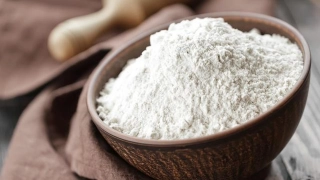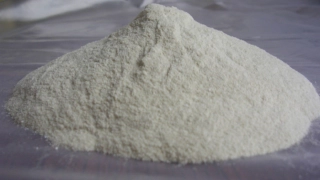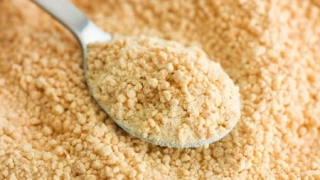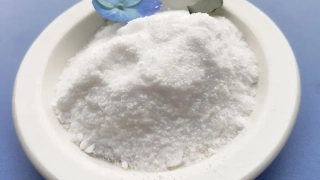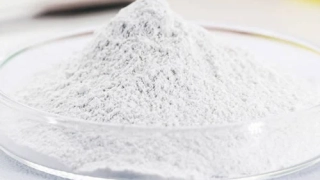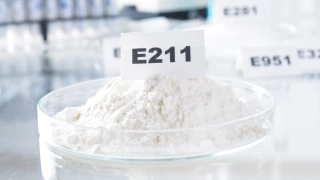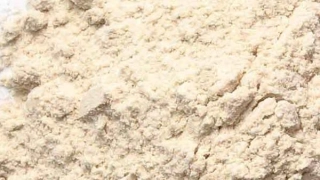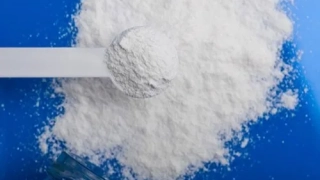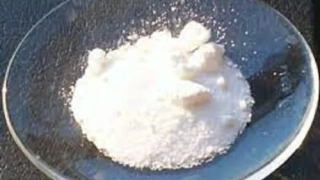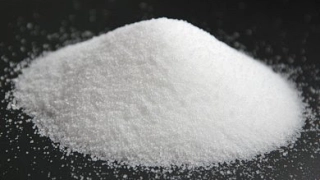Guar Gum (E412): Taste Profile, Aroma, Benefits and Health Risks
Guar gum (E412) is a natural polysaccharide derived from guar beans. It is widely used as a thickener, stabilizer, and emulsifier in food manufacturing, especially in gluten-free and low-fat products. Its high viscosity at low concentrations makes it an economical and versatile additive.
Guar gum is generally recognized as safe and non-allergenic for most people, including those with gluten intolerance. Rarely, excessive intake may cause mild digestive symptoms.
What does Guar Gum (E412) taste like?
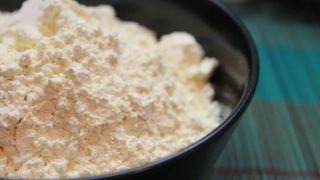
Complete Sensory Description:
-
Taste: Guar gum is virtually tasteless in typical food concentrations and does not alter the flavor of the final product.
-
Aroma: It is odorless in both raw and processed form.
-
Texture: Guar gum’s key sensory impact is on texture—it significantly increases viscosity, providing thickness, creaminess, and stability in foods such as sauces, desserts, and dairy products.
-
Appearance: It appears as a fine, off-white to pale yellow powder. When hydrated, it becomes invisible in foods and does not affect color or clarity.
In-depth Flavor Analysis:
Guar gum consists mainly of galactomannan polysaccharides that absorb water and swell, forming viscous solutions even at low concentrations. It creates a smooth, cohesive, and slightly elastic mouthfeel, preventing separation and improving the texture of low-fat or gluten-free foods. The compound does not interact with flavor molecules, so it preserves the original taste profile of foods.
Varieties and Culinary Applications:
Guar gum is used in ice cream, yogurt, sauces, soups, salad dressings, gluten-free baked goods, and beverages. It helps stabilize emulsions, inhibit ice crystal growth in frozen desserts, and improve dough yield and softness in bakery items. In gluten-free baking, guar gum compensates for the lack of gluten’s structural properties.
Selection and Storage:
Food-grade guar gum is sold as a fine powder in sealed, moisture-proof containers. It should be stored in a cool, dry place, tightly closed to prevent clumping and moisture absorption. When stored properly, it remains effective for extended periods.
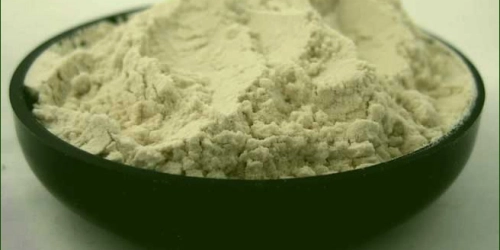
Nutritional Insights:
Guar gum is a source of soluble dietary fiber, but the quantities used in food are typically too small to significantly impact daily fiber intake. It is not digested by humans, and contributes no calories, vitamins, or minerals.
Expert Insights & Culinary Tips:
Chefs and food technologists use guar gum to achieve stable thickness and smooth textures, especially in vegan and gluten-free recipes. It hydrates rapidly and can become very thick, so precise measurement is important to avoid overly gummy or slimy results.
Interesting and Curious Facts:
Guar gum has been used in food and industry for decades due to its high efficiency and plant-based origin. India is the world’s largest producer of guar beans, and the food industry is a major consumer of guar gum.
Harm and Dietary Considerations:
Guar gum is safe for most individuals at normal intake levels. Very high doses may cause bloating or mild laxative effects. There are no known allergenic concerns, but as with any fiber, gradual introduction is best for sensitive digestive systems.
Religious Dietary Considerations:
Guar gum is plant-derived and is considered suitable for Halal, Kosher, vegetarian, and vegan diets.
Final Thoughts & Sensory Journey:
Guar gum (E412) works quietly to build creamy, thick, and stable foods, maintaining natural flavors while enhancing texture and shelf life.
Resources:
-
Belitz, H.-D., Grosch, W., & Schieberle, P. (2009). Food Chemistry (4th Edition). Springer. ISBN: 978-3540699330 (E412)
-
Branen, A. L., Davidson, P. M., & Salminen, S. (2001). Food Additives (2nd Edition). Marcel Dekker. ISBN: 978-0824704382 (E412)
-
Fennema, O. R. (1996). Food Chemistry (3rd Edition). Marcel Dekker. ISBN: 978-0824793546 (E412)
